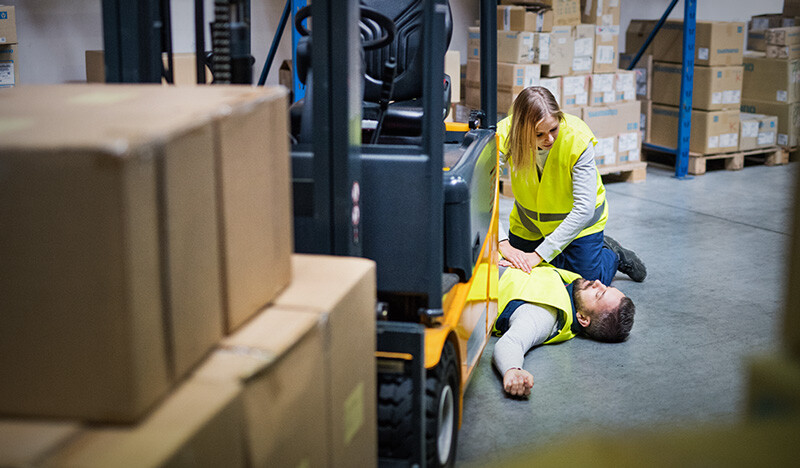Workplace accidents and work-related illnesses are a scourge that, in addition to damaging the health of workers, entail enormous economic costs. The International Labour Organization (ILO) estimates the costs of workplace accidents and illnesses at almost 3 trillion dollars annually worldwide.
However, the harm to health is even more significant than the economic cost. According to the ILO, every year, 2.6 million people die from work-related causes. Of this number, approximately 330,000 cases are due to fatal accidents.
What are the costs of workplace accidents and illnesses?
According to the International Labour Organization (ILO), the costs of workplace accidents and illnesses worldwide amount to almost 3 trillion dollars. This figure represents 3.94% of the global Gross Domestic Product (GDP), reflecting the magnitude of the problem.
To put the data into context, the director of the ILO compared this economic impact to the combined GDP of the 130 poorest countries. Not investing in safety and health translates into enormous costs of workplace accidents and illnesses.
Economic Impact in Europe and Spain
In the European context, the costs of workplace accidents and illnesses also reach macroeconomic figures. According to the National Institute of Safety and Health at Work (INSST), in Europe, they amount to 476 billion euros (524.085 billion dollars).
These 476 billion euros represent 3.3% of the total European GDP. In the specific case of Spain, there are studies estimating the costs of workplace accidents and illnesses at 3% of the country's GDP.
Workplace accident figures in Spain are increasing year after year. The number of accidents during working hours in 2022 was 653,510, according to the Ministry of Labor. Of these accidents, almost 4,000 were considered serious, and 716 were fatal.
Types of Costs of Workplace Accidents and Illnesses
According to the European Agency for Safety and Health at Work, there are different types of costs related to workplace accidents and illnesses:
- Productivity costs: these are directly related to the loss of productivity due to the absenteeism of the affected worker.
- Health costs: these costs of workplace accidents and illnesses can be direct (such as surgeries or medications) or indirect (the need for professional care). In general, it includes all kinds of medical expenses derived from the accident or illness.
- Economic cost derived from the loss of the employee's quality of life.
- Administrative expenses: administration costs related to the event or illness, such as applying for payments to social security.
- Costs related to workers' compensation insurance, such as indemnities or premium payments.
The "human error" behind workplace accidents and how to reduce it
When talking about the costs of workplace accidents and illnesses, the easiest ones to reduce or avoid are those related to accidents. In addition, OSHA states that the cause of between 80% and 90% of workplace accidents is human error.
This organization adds that 99% of work accidents that occur each year are preventable. Therefore, addressing human error can reduce the costs of workplace accidents and illnesses.
One way to reduce human error is to enhance safety and health training. In this regard, technologies like virtual reality (VR) are already helping to digitize and add realism to these training programs, reinforcing awareness.
Virtual reality places workers in front of dangers in their workplace, realistically reproduced in simulations. The employee must make decisions and protect themselves to prevent the risk, and they can make mistakes and even suffer virtual accidents.
This possibility of firsthand checking the consequences of an error reinforces awareness. If the worker becomes aware of the real possibility of an accident, it is less likely that they will adopt reckless behaviors in real life.
According to the European Agency for Safety and Health at Work, the return on investment in terms of risk prevention is significant. They claim that, for every euro invested in promoting safety and health, between 2.5 and 4.8 euros are returned.
Do you want to know more about how virtual reality helps reduce human error and prevent workplace risks, or to implement it in your trainings? Contact us in the following link and ask for information.












